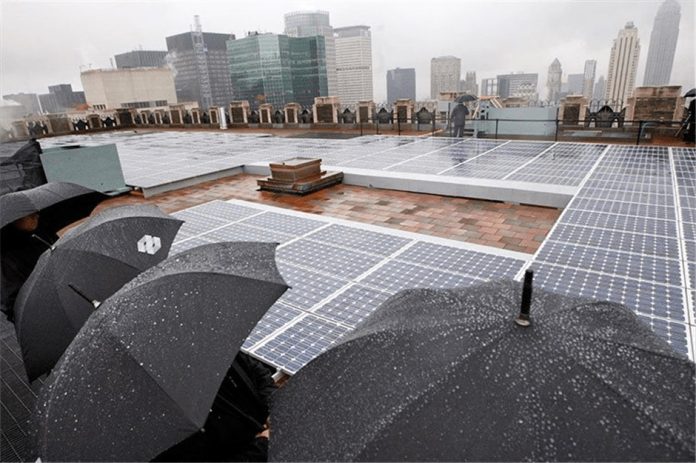In search of free and endless clean energy, humanity has thoroughly explored the possibilities of many resources. The energy of the sun, wind, water, earth is actively used in many countries of the world, which indicates the success of developments and implemented projects. But the search for new sources of energy doesn’t stop. In 2020 a group of scientists from the US and China developed a unique project that involves generating energy using raindrops. Yes, yes, energy from the rain! Such a solution can be a real find for regions where the sun is a rare guest.
It was also discussed earlier about obtaining energy through the use of rain. But all the methods proposed by scientists and adventurers and the prototypes of the installations presented did not make it possible to recoup the costs and make the installation profitable.
The head of the scientific group from China, Wang Quankai, presented an improved project to the world. According to the scientist, one drop of rain falling from a height of 15 cm is capable of generating an electrical voltage of more than 140 volts. The power of an installation operating on such an energy source is capable of feeding more than a hundred small LEDs. The creation of such an energy converter can solve the problem of power supply for small devices, for example, sensors in various devices. Such converters will be an excellent alternative to the already familiar solar panels, which are almost useless in cloudy weather.
It was possible to achieve a significant increase in the efficiency of rain generators by making changes to the design of the devices. Scientists have proposed covering them with polytetrafluoroethylene (PVDF) – a thin membrane of material that can accumulate a charge when raindrops hit it. The accumulation of the surface charge continues until it reaches its maximum. In this case, the drops act as resistors, and the membrane acts as a capacitor.
Work on the practical creation of the first rain generators is already underway. Its result can be special umbrellas with built-in chargers for gadgets, rain batteries for use in regions prone to heavy seasonal rainfall.
The effectiveness of such installations is also evidenced by the work of the French team of scientists led by Thomas Jaeger. Together with colleagues, he managed to assemble a similar transducer using PVDF membrane 25 micrometers thick. When drops hit the surface of the membrane, small oscillations occur on it and generate a current.
More is better
Scientists have deduced the dependence of the efficiency (efficiency) of the device on the size and force of the fall of raindrops. Thus, large drops falling from a greater height and at a lower speed are capable of transferring an energy equivalent to 12 milliwatts to the plate. Thus, a plate with an area of only 3 cm2 is capable of generating a current of up to 15 milliwatts. At a high speed of falling drops, a large amount of energy is spent even in flight and during the fall, because splashing occurs.
French scientists managed to calculate the energy efficiency of rains passing over France. According to them, each square meter of land that falls under the rain is capable of generating up to 1 watt of electricity per year.
Rain energy will become a popular alternative to solar converters in the near future will be known very soon. In the meantime, scientists continue to develop the most effective installations that can prove to the world that energy surrounds us from all sides. Including – in rainy weather.


